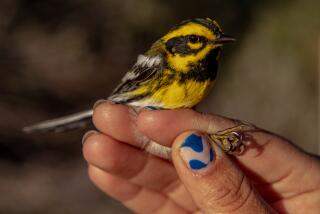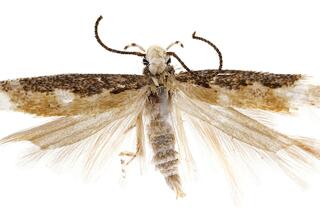Begon Before Begonias, Dahl Before Dahlias
- Share via
Plant names, or nomenclature, are part of a worldwide standard of reference.
The system is basically the same as that established in 1753 by Carolus Linnaeus, a Swedish botanist also known as Carl von Linne. His system identified plants by visual aspects of their flower parts, thereby standardizing procedure and terminology.
Some plants are named after famous people. Washingtonia palms honor George Washington, first president of the United States. The woodland herb Jeffersonia honors Thomas Jefferson, our third president and a notable horticulturist and garden designer.
Besides then-famous people, some are named for the discoverer or the person who financed a plant-finding expedition.
The New Royal Horticultural Society Dictionary of Gardening backgrounds how most plants received their botanical names.
Some plants, such as hoyas, are cultivated by people who would be amazed to know the name honors someone: Thomas Hoy, gardener at Syon House in London, who died in 1822.
Dahlias were named for Andreas Dahl (1751-1789), a Swedish botanist; gardenias for Alexander Garden (1730-1791), a South Carolina botanist; begonias for Michel Begon (1638-1710), governor of French Canada, and camellias for George Camellus (1661-1706), a Jesuit priest.
At his request, a creeping, dwarf shrub (Linnaea) was named for botanist Linnaeus. Native to moist, northern woodlands, it was his favorite flower and commonly appears in his portraits.
Many other names came from Latin or Greek words that describe physical characteristics. Philodendron is from the Greek phileo (to love) and dendron (tree, alluding to the climbing habit). A rose by any other name may smell as sweet, but the Romans called the plant rosa, and that’s the botanical name today for all species. Pinus is the Latin name for pine tree.
Greek philosopher Theophrastus (382-287 BC) describes rose pruning much as it’s still done.
Geranium is from the ancient Greek word geranos, or crane, referring to the long beak of the fruit. The name geranoin was used by Dioscorides, who lived in the first century and produced a manuscript discussing more than 600 plants. The genus Dioscoreacea, named for him, includes edible yams and plants that produce cortisone and oral contraceptives.
More to Read
Sign up for Essential California
The most important California stories and recommendations in your inbox every morning.
You may occasionally receive promotional content from the Los Angeles Times.













